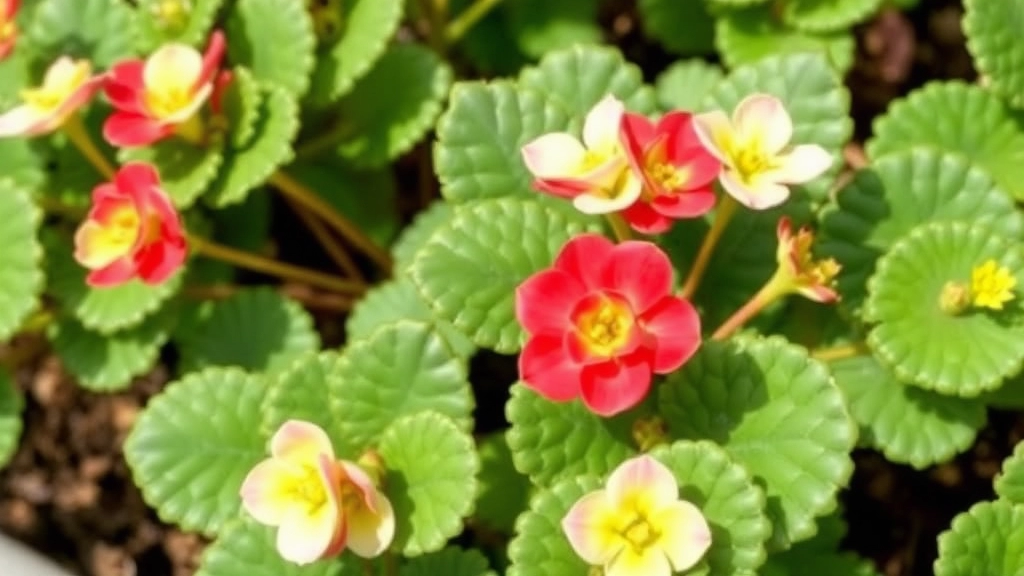Understanding Kalanchoe’s Sunlight Needs
Ever wondered, “Can Kalanchoe take full sun?” You’re not alone. As a plant enthusiast, I’ve often pondered the same. Kalanchoe, known for its vibrant flowers and fleshy leaves, is a popular choice for indoor and outdoor gardens. But understanding its sunlight needs is crucial for its growth and health.
Optimal Light Conditions
From my experience, Kalanchoe thrives best with a mix of bright, indirect light and some direct sunlight. While it can handle full sun, especially during the morning, too much intense afternoon sun might cause leaf burn. So, if you’re planning to place your Kalanchoe outdoors, a spot with partial shade in the afternoon is ideal. This balance ensures your plant stays healthy and blooms beautifully.
Optimal Sunlight Conditions for Kalanchoe
When it comes to cultivating Kalanchoe, many enthusiasts often wonder about the best sunlight conditions for these resilient plants.
Understanding Sunlight Needs
Kalanchoe thrives in bright, indirect sunlight. However, it can also adapt to full sun conditions, making it a versatile choice for different environments. Here are some key points to consider:
- Direct Sunlight: Kalanchoe can tolerate up to six hours of direct sunlight each day.
- Filtered Light: In hotter climates, filtered light is ideal to prevent leaf scorch.
- Indoor vs. Outdoor: If grown indoors, place Kalanchoe near a south or west-facing window for optimal growth.
Signs of Adequate Sunlight
To ensure your Kalanchoe is receiving the right amount of sunlight, look for these indicators:
- Vibrant Colour: Healthy leaves will exhibit rich green hues.
- Compact Growth: The plant should maintain a compact shape rather than stretching towards the light. For more detailed care tips, check out our Complete Guide to Kalanchoe Paddle Plant Care.
Additionally, if you’re dealing with issues like non-flowering Kalanchoe, our guide on Why Your Non-Flowering Kalanchoe Isn’t Blooming offers practical solutions to get your plant back on track.
Effects of Full Sun on Kalanchoe
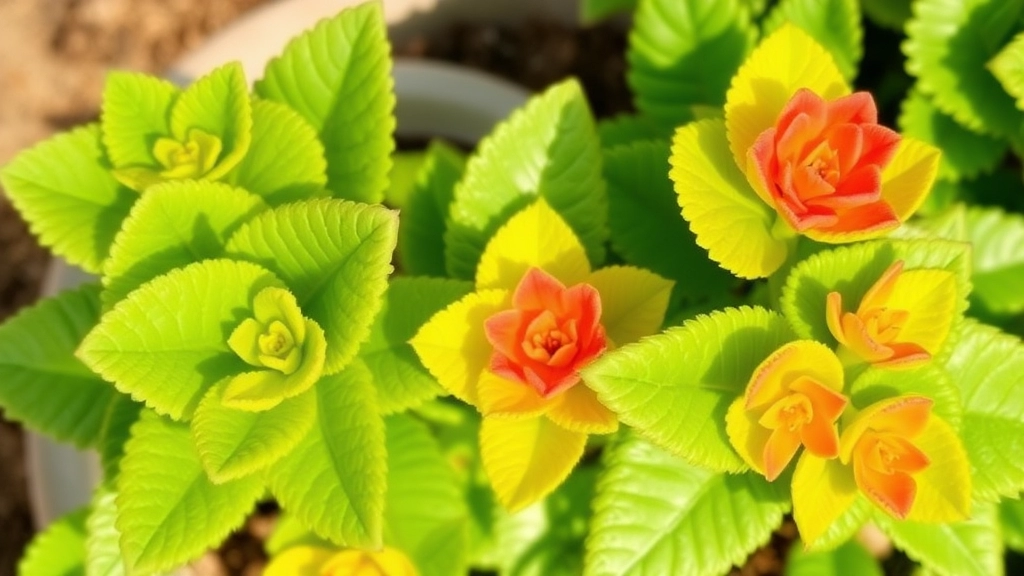
So, you’ve got your Kalanchoe soaking up that glorious sunlight, but what does full sun really mean for its health and happiness?
When we talk about full sun, we’re referring to at least six hours of direct sunlight each day. For Kalanchoe, this can be a double-edged sword.
Positive Effects of Full Sun:
- Vibrant Colours: Full sun can enhance the plant’s vibrant hues, making those blooms pop like you wouldn’t believe.
- Robust Growth: With adequate light, Kalanchoe tends to grow more vigorously, leading to bushier plants.
- Increased Flowering: More sunlight often means more flowers, giving your plant that lush, full look.
Potential Downsides:
- Leaf Scorch: Too much sun can lead to crispy, brown edges on leaves. Not a cute look!
- Water Stress: Full sun can dry out the soil faster, making your plant thirsty.
- Pest Attraction: Sometimes, the stress from too much sun can make Kalanchoe more susceptible to pests like mealybugs.
If you notice your Kalanchoe showing signs of stress, it might be time to think about adjusting its sun exposure.
When considering the optimal conditions for Kalanchoe, it’s essential to think about the environment that will allow this resilient plant to thrive.
### What Makes an Ideal Environment for Kalanchoe?
Kalanchoe is a succulent that flourishes in bright, indirect light. However, finding the right balance in its growing environment can significantly impact its health and vibrancy.
– **Temperature:**
Kalanchoe prefers temperatures between 15°C to 25°C. Avoid exposing it to temperatures below 10°C, as it can lead to stress and potential damage.
– **Humidity:**
This plant thrives in low to moderate humidity. Excess moisture can lead to rot, so ensure good air circulation around your Kalanchoe.
– **Light Exposure:**
While Kalanchoe enjoys bright light, direct sunlight for prolonged periods can cause leaf burn. A south-facing window is often ideal, but filtered light can also work wonders.
– **Indoor vs. Outdoor:**
Indoors, place Kalanchoe near a window with ample light. Outdoors, ensure it’s in a spot that receives morning sun and afternoon shade.
By creating the right environment, you can help your Kalanchoe flourish. For more detailed care tips, you might find this [complete care guide for Kalanchoe Blossfeldiana](https://planthq.org/complete-care-guide-for-kalanchoe-blossfeldiana-succulent/) useful. Additionally, if you are dealing with specific issues like leaf problems, this [guide on Kalanchoe leaf problems](https://planthq.org/kalanchoe-leaf-problems-causes-solutions-and-prevention/) can provide valuable insights.
Watering Needs in Full Sun
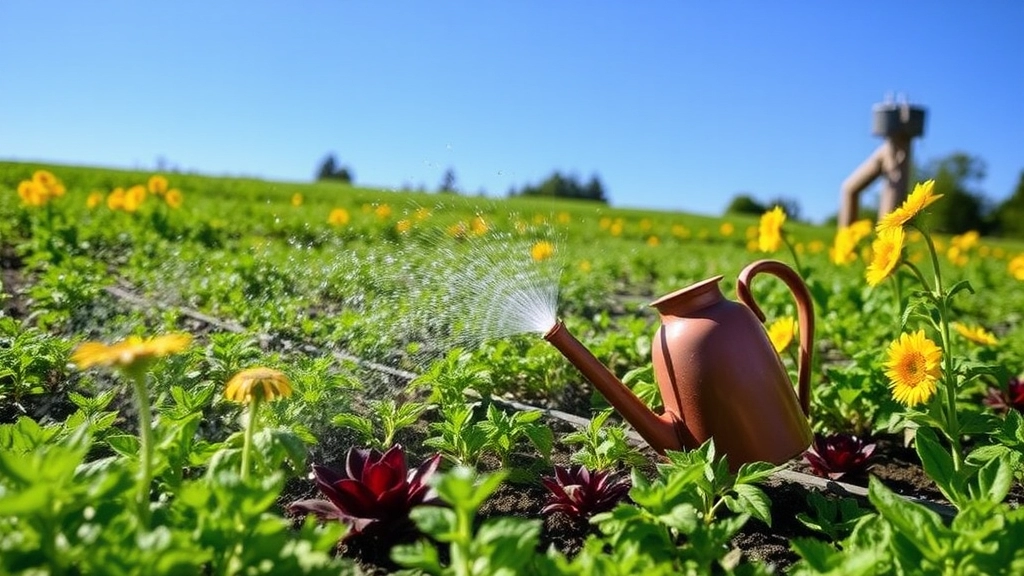
When it comes to caring for Kalanchoe, one of the most pressing concerns for many plant enthusiasts is how to manage watering, especially in full sun.
Kalanchoe thrives in bright light, but this can lead to increased evaporation and rapid drying of the soil. Here are some essential watering tips to ensure your Kalanchoe remains healthy and vibrant:
- Frequency: Water your Kalanchoe deeply but infrequently. Typically, this means every 1-2 weeks, depending on the temperature and humidity levels.
- Soil Check: Always check the soil before watering. Insert your finger about an inch into the soil; if it feels dry, it’s time to water.
- Watering Method: Use room temperature water and apply it directly to the soil, avoiding the leaves. This helps prevent rot and keeps the plant healthy.
- Seasonal Adjustments: During hotter months, you may need to increase the frequency of watering, while in cooler months, reduce it.
- Drainage: Ensure your pot has proper drainage holes. This prevents water from pooling and causing root rot.
Many gardeners worry about overwatering, particularly in full sun conditions. It’s essential to strike a balance between keeping the plant hydrated and preventing excess moisture.
Soil Requirements for Sun Exposure
When cultivating Kalanchoe in full sun, the choice of soil is crucial. Many plant enthusiasts often wonder: What type of soil is best for thriving Kalanchoe in sunny conditions?
Common Issues in Full Sun
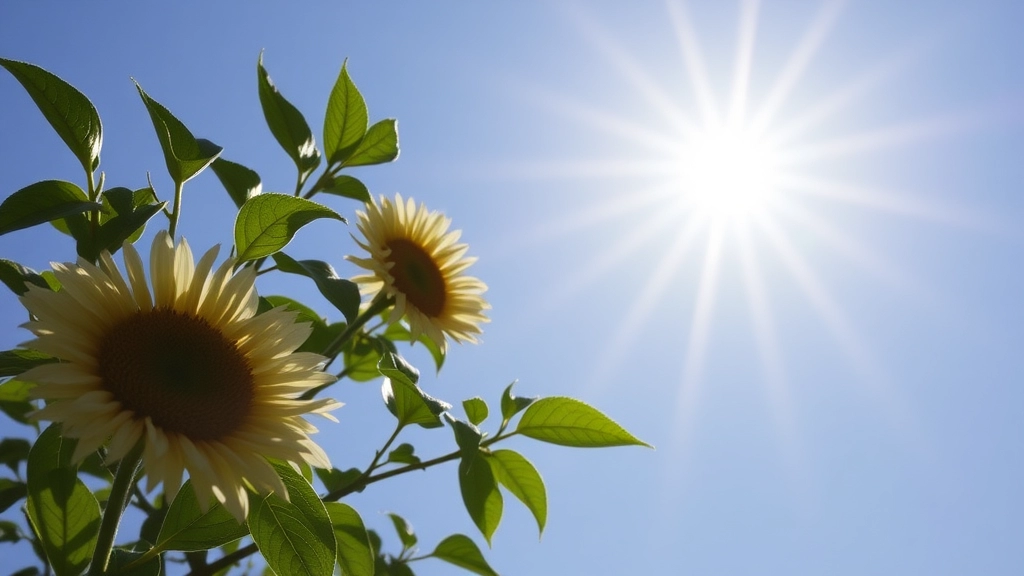
So, you’ve got your Kalanchoe soaking up those rays, but what happens when the sun becomes a bit too much?
Here are some common issues you might face with Kalanchoe in full sun:
- Leaf Burn:
- Too much direct sunlight can scorch the leaves.
- Look for crispy, brown edges—this is a clear sign your plant is feeling the heat.
- Wilting:
- You might notice wilting even if you’re watering correctly.
- This can happen when the plant is stressed from excessive sun exposure.
- Fading Colour:
- The vibrant greens can start to fade.
- If your Kalanchoe looks washed out, it’s a sign it’s not happy in its sunny spot.
- Pest Infestations:
- Full sun can attract pests like aphids or spider mites.
- Keep an eye out for tiny critters or webbing on your plant.
- Stunted Growth:
- Too much sun can hinder growth rather than promote it.
- If your Kalanchoe isn’t thriving, it might need a bit of shade.
To tackle these issues, always monitor your plant’s condition. Adjusting its position slightly can make a world of difference.
Seasonal Sunlight Variations
As we explore the nuances of Kalanchoe care, understanding seasonal sunlight variations is crucial for optimal growth.
How Does Sunlight Change with Seasons?
Throughout the year, the intensity and duration of sunlight fluctuate, impacting your Kalanchoe.
- Spring:
- Longer days and increasing sunlight can boost growth.
- Gradually acclimatise your plant to avoid sunburn.
- Summer:
- Intense sunlight can lead to stress if the plant isn’t adequately prepared.
- Monitor for signs of wilting or scorched leaves.
- Autumn:
- Sunlight begins to wane, signalling a time for reduced watering.
- This is a great time to assess your plant’s health and adjust care.
- Winter:
- Short days and lower light levels can cause dormancy.
- Consider supplementing with grow lights if indoors.
Key Tips for Seasonal Adjustments:
- Monitor Light Exposure:
- Track how much sunlight your Kalanchoe receives. For more detailed guidance, check out our ultimate guide to flowering Kalanchoe care.
- Rotate Your Plant:
- Regularly rotate your plant to ensure even light distribution. Learn how to do this effectively in our step-by-step guide to growing Kalanchoe from cuttings.
- Adjust Watering:
- Be mindful of changing moisture needs as sunlight varies.
Sun Protection Techniques

So, you’ve got your Kalanchoe basking in the sunlight, but what happens when the sun gets a bit too intense?
We all want our plants to thrive, but sometimes that blazing sun can be a bit much. Here are some practical sun protection techniques to keep your Kalanchoe happy and healthy:
- Shade Cloth: Consider using a shade cloth to filter harsh sunlight. Aim for around 30-50% shade to protect your plant without blocking all the light.
- Move Them Indoors: If you’re experiencing a heatwave, bringing your Kalanchoe indoors can give it a break from the relentless sun. Just make sure it still gets plenty of indirect light.
- Strategic Placement: Position your Kalanchoe where it gets morning sun but is shielded from the intense afternoon rays. A spot near a window that faces east works wonders.
- Mulching: If your Kalanchoe is in the ground, adding a layer of mulch can help keep the soil cool and retain moisture, reducing stress on the plant.
- Watering Wisely: Water early in the morning or late in the afternoon. This helps prevent evaporation and keeps your Kalanchoe hydrated during the hottest parts of the day.
- Monitor Humidity: If you’re in a particularly dry climate, consider using a humidifier nearby or placing a water tray with pebbles under your pot to increase humidity.
When considering the best companions for Kalanchoe, it’s essential to think about the plant’s unique needs and characteristics. Pairing Kalanchoe with the right plants not only enhances the aesthetic appeal of your garden but also promotes healthy growth.
### Why Choose Companion Plants?
Companion planting can help:
– **Improve growth**: Certain plants can enhance the growth of Kalanchoe by providing nutrients or improving soil health.
– **Repel pests**: Some plants naturally deter pests that might otherwise harm Kalanchoe.
– **Create a balanced ecosystem**: A diverse plant environment can lead to a healthier garden overall.
### Ideal Companion Plants for Kalanchoe
– **Aloe Vera**:
– Thrives in similar sunlight conditions.
– Offers a striking contrast in texture and colour.
– **Sedum**:
– Drought-tolerant and shares similar watering needs.
– Adds variety with its fleshy leaves and vibrant blooms.
– **Echeveria**:
– Prefers similar light and soil conditions.
– Provides a stunning visual with its rosette shape.
– **Agave**:
– Hardy and resilient, complementing Kalanchoe well.
– Offers a dramatic, sculptural presence in the garden.
– **Portulaca (Moss Rose)**:
– Flourishes in full sun and requires minimal watering.
– Its colourful flowers can brighten up the space.
### Tips for Successful Companion Planting
– **Assess Sunlight Needs**: Ensure all plants can thrive in full sun.
– **Monitor Watering**: Group plants with similar watering requirements to avoid over or under-watering.
– **Consider Size and Growth Patterns**: Choose companions that won’t overshadow Kalanchoe or compete for nutrients.
By selecting the right companion plants, you can create a vibrant and thriving garden that showcases Kalanchoe beautifully. For more detailed guidance on caring for your Kalanchoe, check out our [complete guide to growing Kalanchoe Mother of Thousands](https://planthq.org/complete-guide-to-growing-kalanchoe-mother-of-thousands/) and our tips on [fixing overgrown and leggy Kalanchoe](https://planthq.org/fix-overgrown-leggy-kalanchoe-pruning-and-care-tips/).
X. Pruning and Maintenance
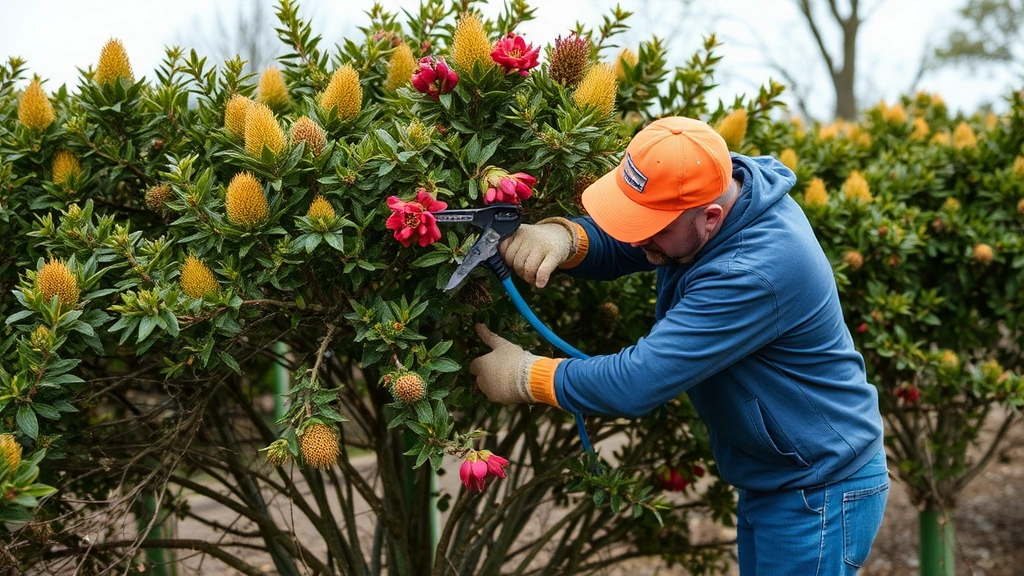
So, you’ve got your Kalanchoe thriving in that glorious sunlight. But how do you keep it looking its best?
Why Pruning Matters
Pruning isn’t just about keeping things tidy; it’s essential for your Kalanchoe’s health. Regular maintenance helps encourage new growth and keeps the plant from becoming leggy. Plus, it can enhance flowering, which is a bonus!
When to Prune
- Timing: The best time to prune is right after the blooming season. This allows your plant to focus its energy on new growth.
- Signs to Prune: If you notice any dead leaves or stems, those should be snipped away immediately.
How to Prune
- Tools: Grab some clean, sharp scissors or pruning shears. Clean tools help prevent disease.
- Technique:
- Cut just above a leaf node to encourage new growth.
- Remove any dead or yellowing leaves to keep your plant healthy.
Maintenance Tips
- Watering: After pruning, adjust your watering schedule. Your Kalanchoe will need a bit less water as it recovers.
- Fertilising: A light feed with a balanced fertiliser can give your plant a boost. Just don’t overdo it; too much can stress it out.
- Dusting: Wipe down the leaves occasionally to keep them clean. Dust can block sunlight and reduce photosynthesis.
Common Mistakes to Avoid
- Over-pruning: It’s tempting to go all out, but too much pruning can shock your plant.
- Ignoring the Seasons: Pruning in the wrong season can hinder growth. Stick to post-bloom.
Signs of Sun Stress in Kalanchoe
Have you noticed your Kalanchoe looking a bit off after prolonged sun exposure? Understanding the signs of sun stress is crucial for maintaining the health of your plant.
Key Indicators of Sun Stress:
- Leaf Discoloration:
- Look for yellowing or browning leaves.
- Dark spots can also indicate sunburn.
- Wilting:
- Leaves may droop or feel soft to the touch, signalling dehydration.
- Leaf Drop:
- If your Kalanchoe starts shedding leaves, it could be a response to excessive sunlight.
- Stunted Growth:
- A noticeable slowdown in growth may suggest that your plant is struggling.
- Burnt Leaf Edges:
- The edges of the leaves may turn crispy and brown, a clear sign of too much sun.
What to Do:
- Assess Light Exposure:
- Consider relocating your plant to a spot with filtered sunlight. For detailed guidance, check out our best practices for indoor and outdoor care.
- Adjust Watering:
- Ensure your watering schedule meets the plant’s needs, especially in hot weather. You might find our expert tips on Kalanchoe care useful.
- Monitor Soil Condition:
- Check for dryness and ensure the soil retains adequate moisture.
If you’ve found yourself wondering how to keep your Kalanchoe thriving in various climates, you’re not alone.
Different regions can present unique challenges for plant care, especially for sun-loving beauties like Kalanchoe.
### Hot and Dry Climates
In hotter climates, Kalanchoe can bask in the sun, but you’ll need to keep an eye on a few things:
– **Watering**: Increase your watering frequency, but ensure the soil drains well.
– **Shade**: Consider providing some afternoon shade to prevent leaf burn.
– **Humidity**: If the air is dry, misting can help maintain moisture levels.
### Humid and Tropical Climates
For those in more humid areas, Kalanchoe might need a bit of extra attention:
– **Air Circulation**: Ensure good airflow around your plants to prevent fungal issues.
– **Watering**: Water less frequently, as high humidity can keep the soil moist longer.
– **Sun Exposure**: Morning sun is ideal, but avoid the harsh afternoon rays.
### Cool and Temperate Climates
If you’re in a cooler region, you might be dealing with shorter growing seasons:
– **Indoor Care**: Bring your Kalanchoe indoors during colder months to keep it warm. For more detailed tips, check out our [complete guide to Kalanchoe plant care](https://planthq.org/complete-guide-to-kalanchoe-plant-care/).
– **Lighting**: Use grow lights if natural light is limited.
– **Frost Protection**: Make sure to cover or move your plants if frost is expected.
### General Tips for All Climates
No matter where you are, here are a few universal tips to keep your Kalanchoe happy:
– **Monitor Growth**: Keep an eye on how your plant responds to its environment. Adjust care as needed.
– **Fertilize Wisely**: Use a balanced fertilizer during the growing season, but cut back in winter. For specific advice on fertilizing and other care tips, our [post-flowering care tips for Kalanchoe](https://planthq.org/postflowering-care-tips-for-kalanchoe/) can be very helpful.
– **Observe Signs**: Look for signs of stress, like wilting or discolouration, to adjust your care routine.
FAQs on Kalanchoe and Full Sun Exposure
Can Kalanchoe Take Full Sun?
Yes, Kalanchoe can take full sun, which means at least six hours of direct sunlight each day. However, it’s important to monitor the plant for signs of stress and adjust its sun exposure accordingly.
What Are the Benefits of Full Sun for Kalanchoe?
Full sun can enhance the plant’s vibrant colors, promote robust growth, and increase flowering. These benefits contribute to a healthier and more visually appealing plant.
What Are the Potential Downsides of Full Sun for Kalanchoe?
Too much sun can lead to leaf scorch, water stress, and increased susceptibility to pests. These issues can negatively impact the plant’s health and appearance.
How Often Should I Water Kalanchoe in Full Sun?
Water your Kalanchoe deeply but infrequently, typically every 1-2 weeks. Always check the soil before watering and adjust the frequency based on temperature and humidity levels.
What Are Common Issues with Kalanchoe in Full Sun?
Common issues include leaf burn, wilting, fading color, pest infestations, and stunted growth. Monitoring your plant and adjusting its position can help mitigate these problems.
What Are Some Sun Protection Techniques for Kalanchoe?
Consider using shade cloth, moving the plant indoors during heatwaves, strategic placement to avoid intense afternoon sun, mulching, watering wisely, and monitoring humidity to protect your Kalanchoe from excessive sun exposure.
Why Is Pruning Important for Kalanchoe?
Pruning helps encourage new growth, prevents the plant from becoming leggy, and can enhance flowering. Regular maintenance keeps your Kalanchoe healthy and looking its best.
When Is the Best Time to Prune Kalanchoe?
The best time to prune is right after the blooming season. This allows the plant to focus its energy on new growth. Dead leaves or stems should be removed immediately.
How Should I Prune My Kalanchoe?
Use clean, sharp scissors or pruning shears. Cut just above a leaf node to encourage new growth and remove any dead or yellowing leaves. This keeps your plant healthy and promotes better growth.
What Are Some Common Mistakes to Avoid When Pruning Kalanchoe?
Avoid over-pruning, as it can shock the plant. Also, be mindful of the seasons; pruning in the wrong season can hinder growth. Stick to post-bloom pruning for the best results.
References
-
Kalanchoe Plant Care: Growing Kalanchoe as a Houseplant
-
How to Grow and Care for Kalanchoe
-
Kalanchoe: How to Grow and Care for Kalanchoe Plants
